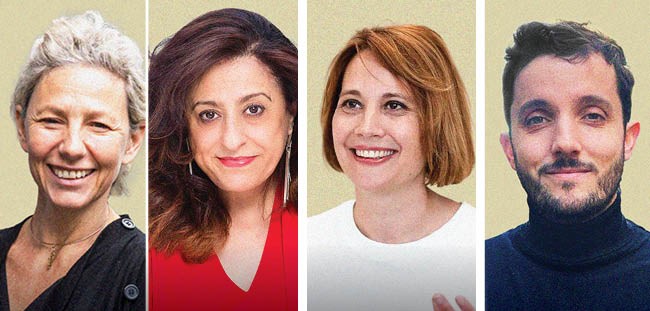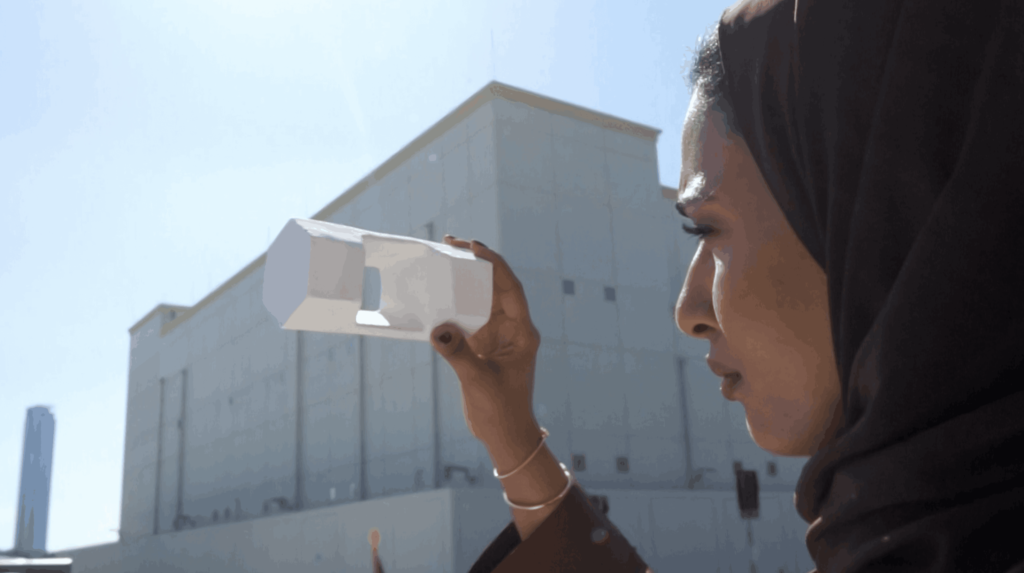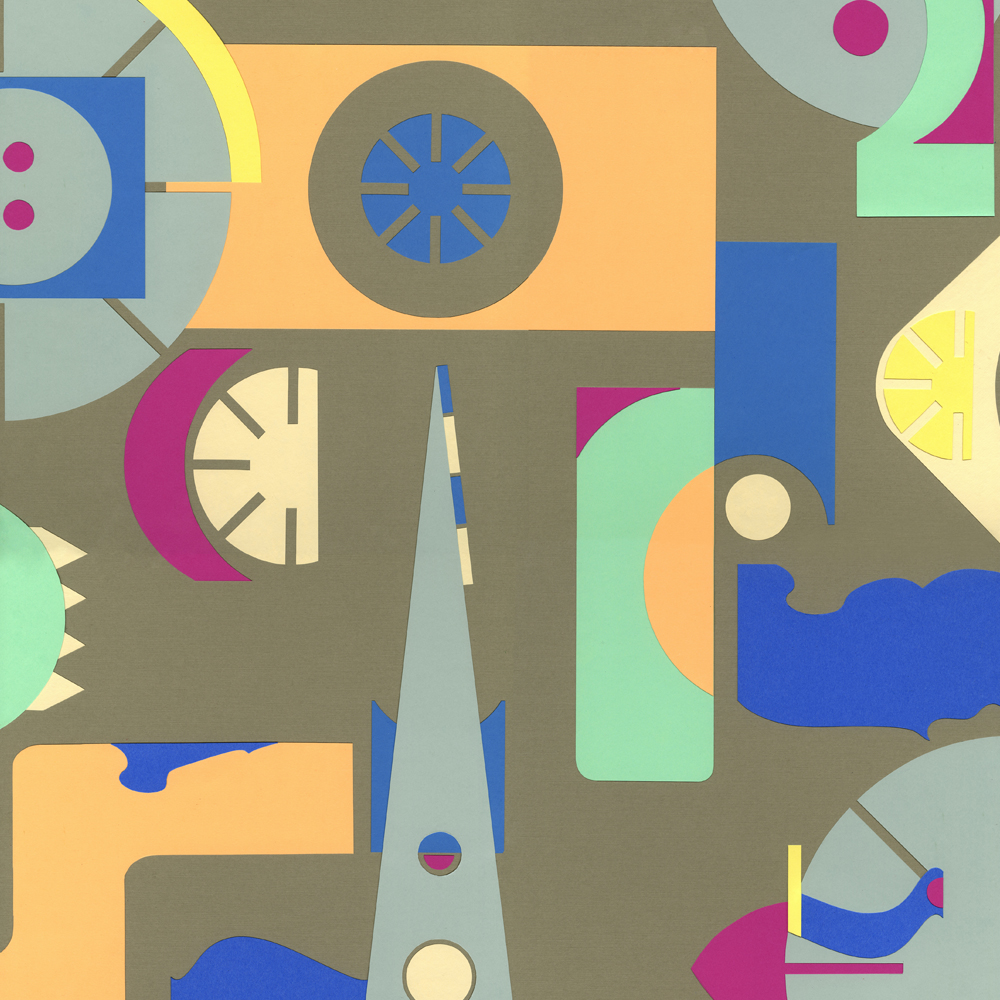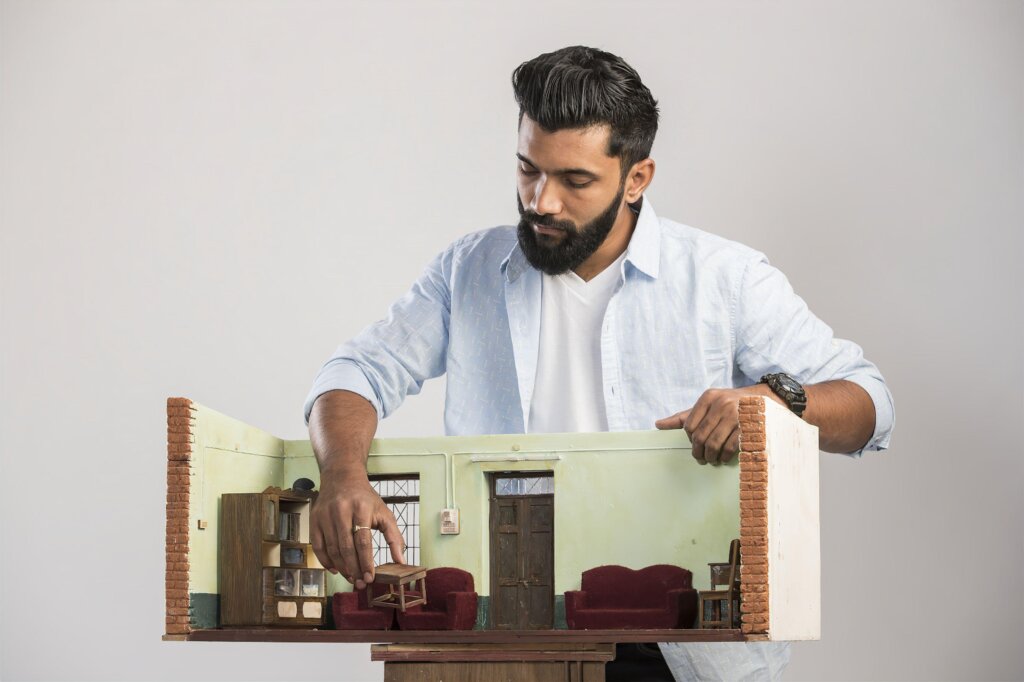As Julius Baer launches its latest cultural initiative NEXT at Art Dubai 2023 with a new commission by Refik Anadol, art historian and Julius Baer curator Barbara Staubli shares her insights into how one of the world’s foremost corporate collections was built and is evolving.
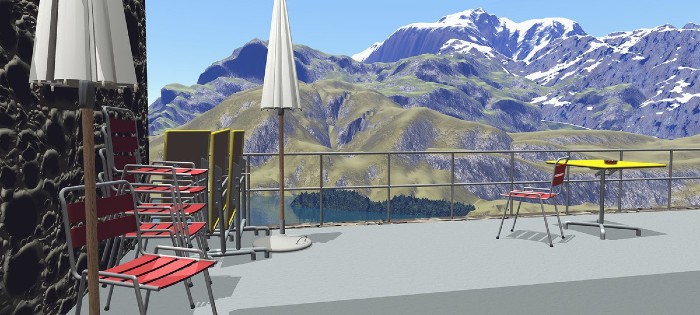
Studer / van den Berg (b. 1960/b. 1962), ‘Terrasse’ (2000), inkjet print on paper, mounted on aluminium, 120 x 270 cm, courtesy the artists and Julius Baer Art Collection
As Julius Baer renews its partnership with Art Dubai and prepares to open the doors to its 17th edition, Barbara Staubli, curator of the Julius Baer art collection talks to writer Eleanor Mills about her role, the art world and what she’s looking forward to at the fair this year.
What was your path to becoming curator of the Julius Baer art collection?
I studied history and art history, and then I worked in different galleries, among them Hauser and Wirth, which was a great experience. I got to a point when I became interested in either working in a museum or a corporate collection.
What inspires you about working in a corporate environment?
It’s very dynamic which suits me well. There is a lot of freedom to shape how you want to do things. Specifically in my role, as I can have influence on the art collection and how it’s embedded in the company structure.
How has the Julius Baer art collection changed since you’ve been there?
When the collection was started in the 1980s, there was a focus on young artists and supporting them at the beginning of their career. Around the time I started, my colleagues had come to a realisation that if we only focused on the beginning of an artist’s career then we will miss the rest. For instance, mid-career or late work can be very iconic. So, this is something that we have begun to address since I’ve been here. We still very much focus on younger artist –one of our guidelines is to collect an artist at a very early stage of their career – but we then follow that artist throughout their career and acquire additional works as they develop their artistic practice, so that we have a good representative body of work.
What makes the Julius Baer art collection unusual?
For me it is how it has grown organically – there was a passion for the arts in the organisation, which originated from the founding family who often supported artists. The corporate collection was started by a Baer family member in the 1980s, and there was always the idea that art should be part of the everyday environment, that it should be embedded, and that culture is important because it creates a dialogue in the workplace. The collection developed very naturally in that sense, and what’s key is the idea that it’s a philanthropic approach to support young artists, and not specifically an investment.
Is the collection packed with superstar artworks?
When you acquire works by very young artists, you’re naturally taking a risk, as you do not really know how their practice will develop over time and whether they will be successful. But sometimes courageous decisions get rewarded. We have a video work in the collection that we acquired in 1995 at a really affordable price, but the artist has grown in stature and that work is something that today significantly exceeds our budget. That’s a nice success story, but that’s not the intention. The intention is to represent interesting developments in art. This is one of the collection’s strengths, because within the more than 5,000 works we own, we really hold a mirror up to art history and you really see what was going on for decades and decades. It’s much easier to acquire very established artists – there is not much you can do wrong. It’s with the young ones you take a chance, and we carefully select them but there is always a risk involved.
How do you research a specific acquisition?
There are some brilliant artists that are already part of the collection, but they may not have gallery representation, or they don’t have a show coming up, so we often make studio visits. We are also in dialogue with lots of artists, so we’ll often know if somebody is working on something that we’re interested in. We also visit lots of art graduate shows, and we look out for which artists have residencies where, and who wins the big art prizes too.
And by keeping abreast of the art scene, seeing what’s on at galleries, non-profit spaces and museums, that helps us narrow down our choices. After all, it’s not only important that we think an artist or artwork is interesting, it’s important that these organisations do too.
How does the acquisition process work?
The acquisitions are all made in consultation with our Art Committee. We have one external expert, and the rest of the committee is made up of Julius Baer employees, which is also quite special, the idea being that art is for everyone. For every employee, there is a representative on the committee. And then, the seven committee members – who are based across Switzerland, in Lugano, Basel, Geneva and Zurich – go to a lot of galleries, exhibitions, new spaces, meet artists at their studios and we also go to many museums and art fairs. Then, we’ll meet four or five times a year, depending a bit on what’s going on.
The Committee discusses each of the proposals in detail and, once we have a course of action for each, we try to go to see something together, possibly with the intention to buy. For example, in January, we had our meeting at the bank’s premises, then went to Art Genève, a good art fair here in Switzerland. We all had a thorough look around, and then we discussed what we might like to acquire on the spot and that ended up with us buying three works by two mid-career Swiss artists, two by Julia Steiner and one by Maureen Kaegi.
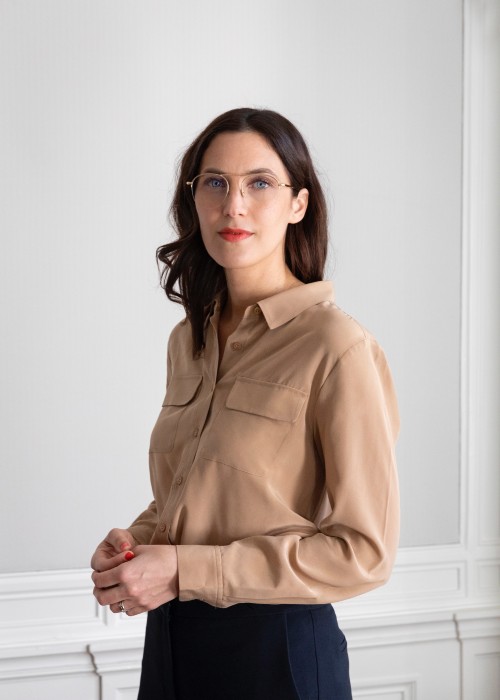
What will you be looking for at Art Dubai?
What I’m really interested in is seeing the art trends from across the Global South as well as the emerging digital art trends. I have always appreciated the art fair very much – there are so many discoveries you can make. So, this year will be a research visit, which I’m very much looking forward to.
So, how do you go about curating the Julius Baer offices?
The collection is displayed in Julius Baer’s meeting rooms around the globe.
Curating client meeting rooms is very different to helping colleagues choose work for their private office spaces, and then there’s all the hallways and corridors too. We hang art everywhere we can.
Do many employees ask for particular works for their office?
My colleagues here in Zurich have a great interest in our art, and anyone can choose anything they want – there is no hierarchy. So, depending on what they’re looking for, we would take them through the available works (as some will be lent to other offices around the world) and find something that is to their liking. We want to be able to answer every request we have from our employees, because this is such a lovely thing that you can have art in your office. It is a great privilege. We have a lot of demand, which I really like, because it shows that we really appreciate culture within the company.
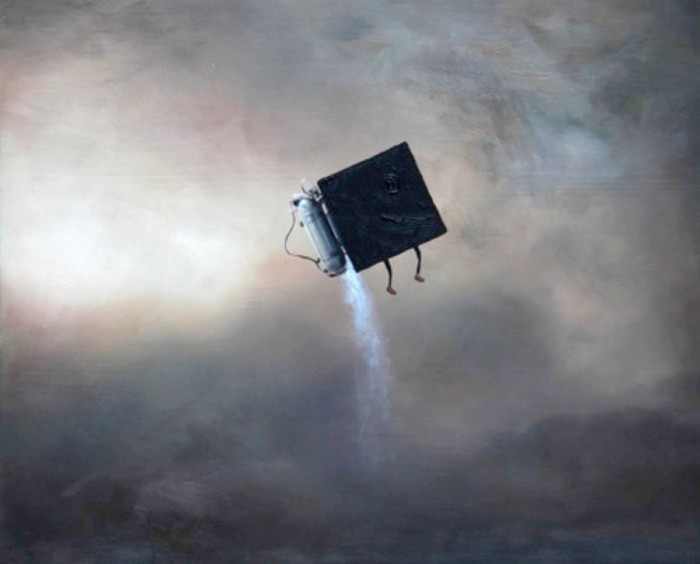
Studer / van den Berg (b. 1960/b. 1962), ‘Terrasse’ (2000), inkjet print on paper, mounted on aluminium, 120 x 270 cm, courtesy the artists and Julius Baer Art Collection
Do you ever lend works to museums?
Yes, we just sent out two works by Francisco Sierra, to Kunsthalle Appenzell in the east of Switzerland, and also some drawings by Ilse Weber to Bündner Kunstmuseum, also in Switzerland. So, sometimes I have to explain to a colleague that a work will be gone for three months and from their reaction you can see how attached to the art they really are, as if they can’t work without it.
Do you curate temporary exhibitions?
We have a space where we show our new acquisitions of the previous year, and we sometimes invite an artist to give a talk for employees. The other half of the year, we try to run a themed exhibition, finding common threads from the works we have in the collection.
You’ve also started running guided tours?
We have been offering guided tours to our clients and employees for many years, but they became especially popular after the pandemic. We – there are four of us in my team – take groups of up to 20 employees around the Headquarters premises once a month. We are happy we get to have this dialogue and exchange about the artworks we hold. I really appreciate giving guided tours, to employees and to clients. It’s always very interesting to hear a different perspective, or see something I hadn’t seen before that somebody points out.
What does art bring to the office environment?
I believe in the communicative power an artwork has, that it speaks to you and that you also grow with it. The more time I spend with an artwork, , the more I start seeing it differently or I appreciate it in another way. Also, if we ever hang one of the more provocative works in a more communal space, like a corridor, we might receive some strong reactions. But then people get used to it, and then if you dare to take it away, you will receive a phone call requesting it back. I’m very confident that art is inspiring to have in the workplace – I really think it gives a fresh perspective. I also like to hear people talk about it. And actually, quite funnily, here at the headquarters, the corridors and passageways are like a labyrinth, so sometimes I also hear employees saying, ‘you go left after this big yellow one and down the stairs,’ or something like that, almost as if art can give directions.
Do you have any specific collecting aims at the moment?
It is very important to us that we always try to acquire new trends or new developments in art, but no NFT entered the collection yet. When we look back to the 1980s, we acquired some important photographs, and in the 1990s we collected some brilliant video works. In 2001, one of the first computer-generated prints from the online art project ‘Hotel Vue des Alpes’ by the artist duo Studer / van den Berg became part of the collection, which is now regarded as a classic of Swiss media art.
Of course, we have this aspiration that the artworks we buy today will be iconic and that somebody looking back would think we made courageous decisions in 2023. We should continue to ask ourselves, ‘what is going on in the world and how does art encapsulate that?’
Our newly launched NEXT initiative does just this – looking at the intersection of art, science and technology. We solely focus on megatrends, which are the big ideas that ‘disrupt’ our society that are really changing the way we live or the way we work. The idea behind NEXT is that the different fields of science, technology and art should intertwine with each other and that this interdisciplinary approach should fuel different perspectives and outcomes. The whole initiative is advised upon by Hans Ulrich Obrist, the artistic director of the Serpentine in London.
And it’s launching at Art Dubai?
The artist who has been asked to represent the scheme’s inaugural year is Refik Anadol, an internationally renowned media artist and pioneer in artificial intelligence data and machine learning. And at Art Dubai, he will present his new work under the NEXT initiative, which is called ‘Glacier Dreams’. You can infer what the subject of the piece might be, and it will tap into the fragility of the world. This commission is also a way of celebrating Julius Baer’s long collaboration with Art Dubai, and our patronage in the region and the Middle East more broadly. The unveiling of Anadol’s artwork will be the first time that anyone from Julius Baer will have seen it – it’s very exciting. I’m really looking forward the big reveal.
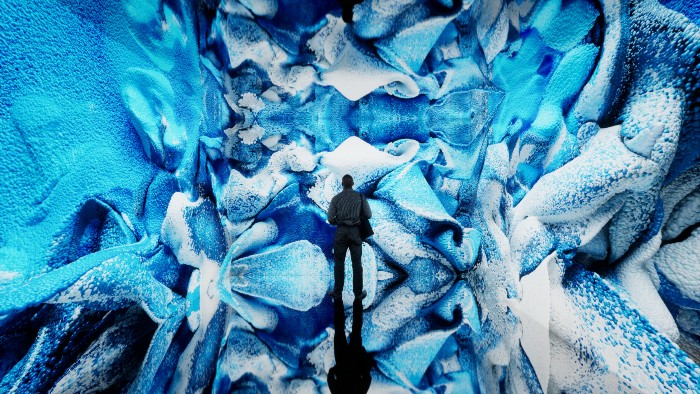
Refik Anadol, Glacier Dreams, 2023, (C) Refik Anadol Studios





